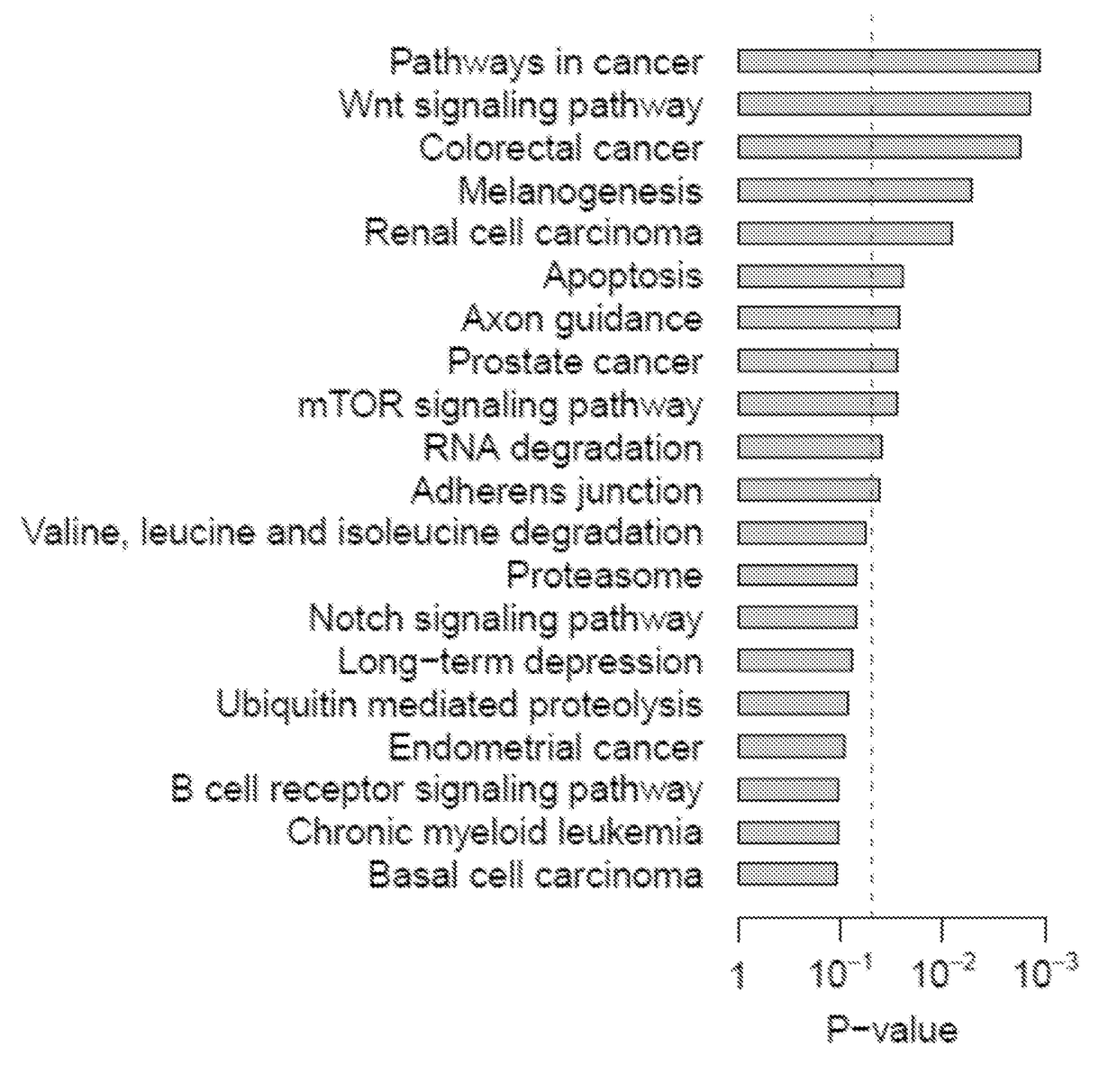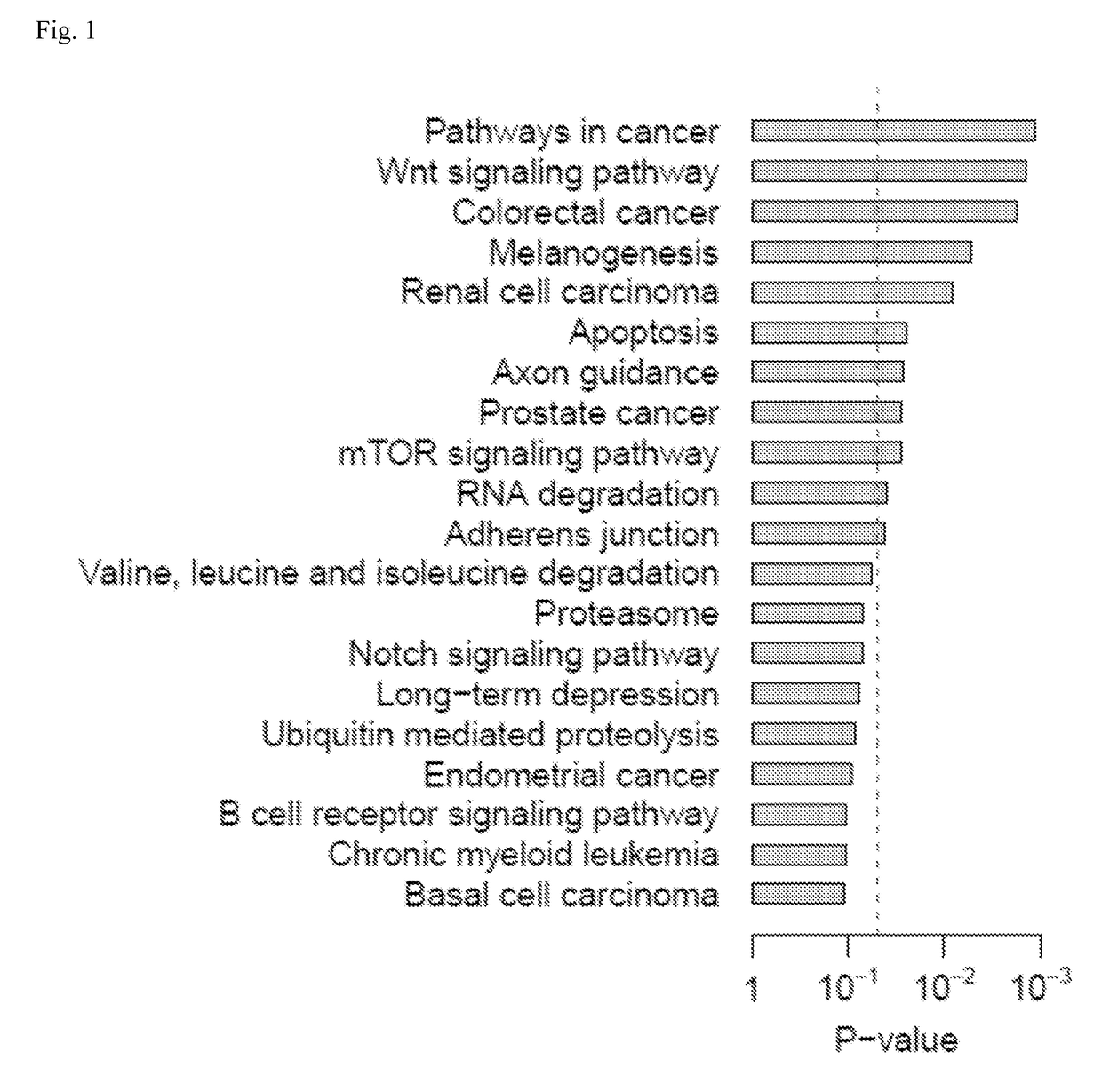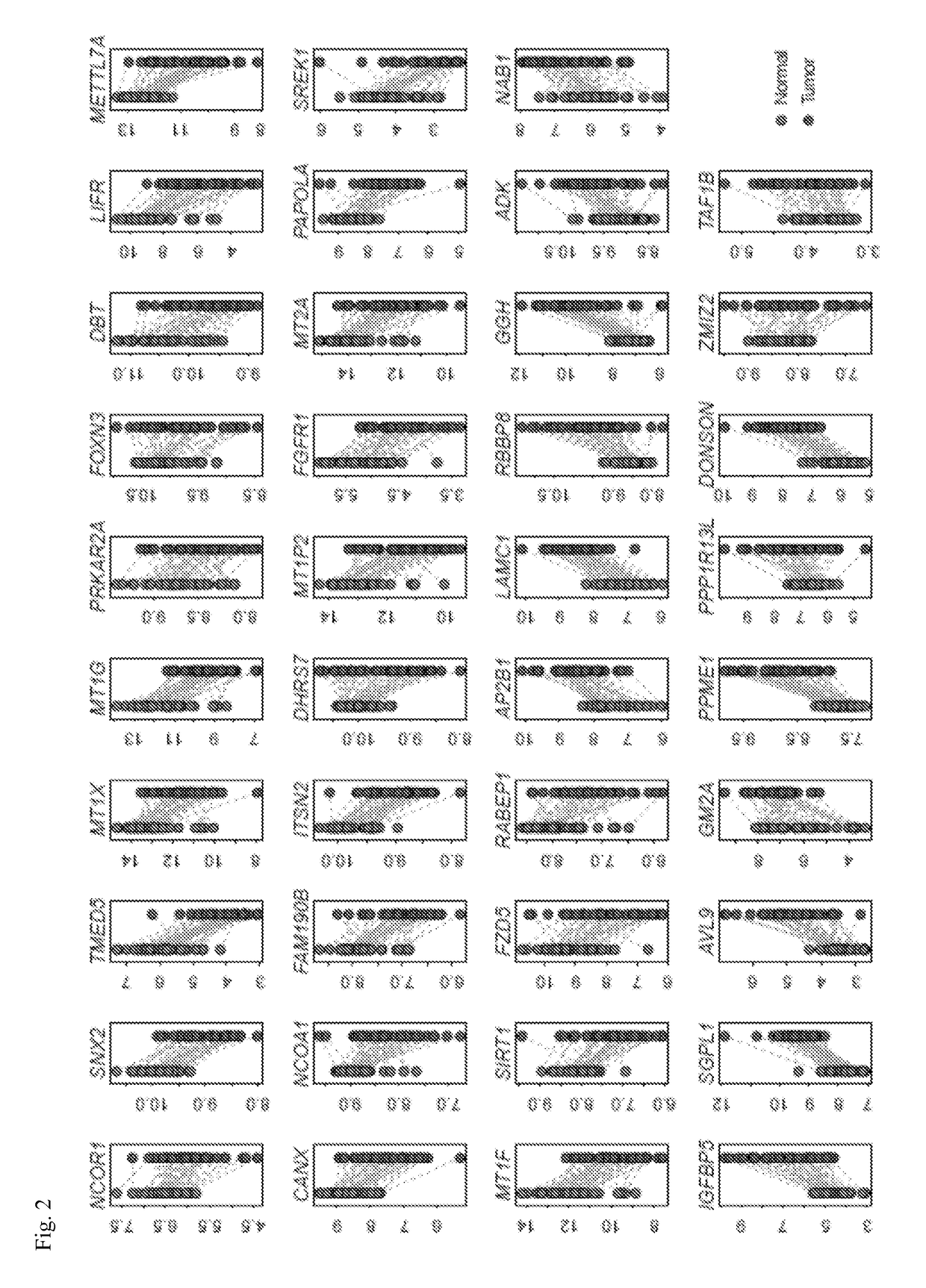Systems and methods for characterizing cancer
a cancer and cancer technology, applied in the field of cancer characterization methods, can solve the problems of not being able to identify which specific patients are at high risk of relapse, and not being able to find the treatment that fits every patient, so as to reduce the likelihood of recurrence free survival, and increase or decrease gene expression.
- Summary
- Abstract
- Description
- Claims
- Application Information
AI Technical Summary
Benefits of technology
Problems solved by technology
Method used
Image
Examples
example 1
Methods
Expression Microarray Data
[0100]Gene expression data of WT and NAMPT KD MCF-7 breast cancer cells (GSE13449) (Zhang, T. et al., J Biol Chem 284, 20408-20417, (2009)) and of WT and NAMPT KD pulmonary microvascular endothelial cells (GSE34512) (Cheranova, D., et al., Genes Cells 17, 420-430, (2012)) were obtained from the NCBI GEO database (Edgar, R., Domrachev, M. & Lash, A. E. et al., Nucleic Acids Res 30, 207-210, (2002)). The gene expression data of paired normal and tumor tissues for lung (GSE18842) (Sanchez-Palencia, A. et al. Int J Cancer 129, 355-364, (2011)), colon (GSE23878) (Uddin, S. et al. Am J Pathol 178, 537-547, (2011)), pancreatic (GSE15471) (Badea, L., et al., Hepatogastroenterology 55, 2016-2027, (2008)), and thyroid (GSE33630) cancers were also collected from the GEO database. Training and validation cohorts were constructed for lung and breast cancers. From the GEO database, the expression datasets with available information on recurrence-free survival were...
PUM
| Property | Measurement | Unit |
|---|---|---|
| length | aaaaa | aaaaa |
| size | aaaaa | aaaaa |
| nucleic acid | aaaaa | aaaaa |
Abstract
Description
Claims
Application Information
 Login to View More
Login to View More - R&D
- Intellectual Property
- Life Sciences
- Materials
- Tech Scout
- Unparalleled Data Quality
- Higher Quality Content
- 60% Fewer Hallucinations
Browse by: Latest US Patents, China's latest patents, Technical Efficacy Thesaurus, Application Domain, Technology Topic, Popular Technical Reports.
© 2025 PatSnap. All rights reserved.Legal|Privacy policy|Modern Slavery Act Transparency Statement|Sitemap|About US| Contact US: help@patsnap.com



